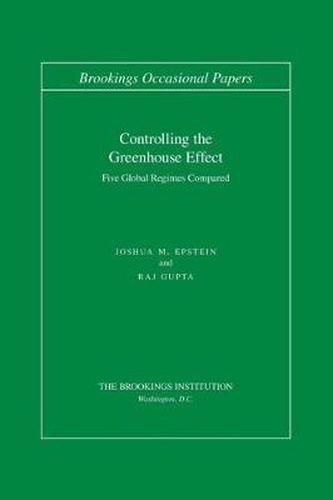Readings Newsletter
Become a Readings Member to make your shopping experience even easier.
Sign in or sign up for free!
You’re not far away from qualifying for FREE standard shipping within Australia
You’ve qualified for FREE standard shipping within Australia
The cart is loading…






Roughly 30 percent of the solar radiation directed toward the earth is reflected directly back into outer space. The remaining 70 percent is absorbed by earth and re-emitted outward as long-wave or infra-red radiation. While transparent to incoming solar radiation, certain gases–notably carbon dioxide, nitrous oxide, methane, and chlorofluorocarbons absorb, or
trap,
this outgoing infra-red radiation near the earth’s surface, producing an increase in temperature. This is the so-called greenhouse effect. The greater the concentration of these greenhouse gases, the more pronounced will be the effect. Despite uncertainties, the scientific consensus recorded at Villach, Austria, in 1985 was that
the understanding of the greenhouse question is sufficiently developed that scientists and policy-makers should begin an active collaboration to explore the effectiveness of alternatives and adjustments.
The recent scientific assessment of climate change, conducted under the auspices of the UN Intergovernmental Panel on Climate Change, has only strengthened the view that a concerted multilateral response is called for.
$9.00 standard shipping within Australia
FREE standard shipping within Australia for orders over $100.00
Express & International shipping calculated at checkout
Roughly 30 percent of the solar radiation directed toward the earth is reflected directly back into outer space. The remaining 70 percent is absorbed by earth and re-emitted outward as long-wave or infra-red radiation. While transparent to incoming solar radiation, certain gases–notably carbon dioxide, nitrous oxide, methane, and chlorofluorocarbons absorb, or
trap,
this outgoing infra-red radiation near the earth’s surface, producing an increase in temperature. This is the so-called greenhouse effect. The greater the concentration of these greenhouse gases, the more pronounced will be the effect. Despite uncertainties, the scientific consensus recorded at Villach, Austria, in 1985 was that
the understanding of the greenhouse question is sufficiently developed that scientists and policy-makers should begin an active collaboration to explore the effectiveness of alternatives and adjustments.
The recent scientific assessment of climate change, conducted under the auspices of the UN Intergovernmental Panel on Climate Change, has only strengthened the view that a concerted multilateral response is called for.